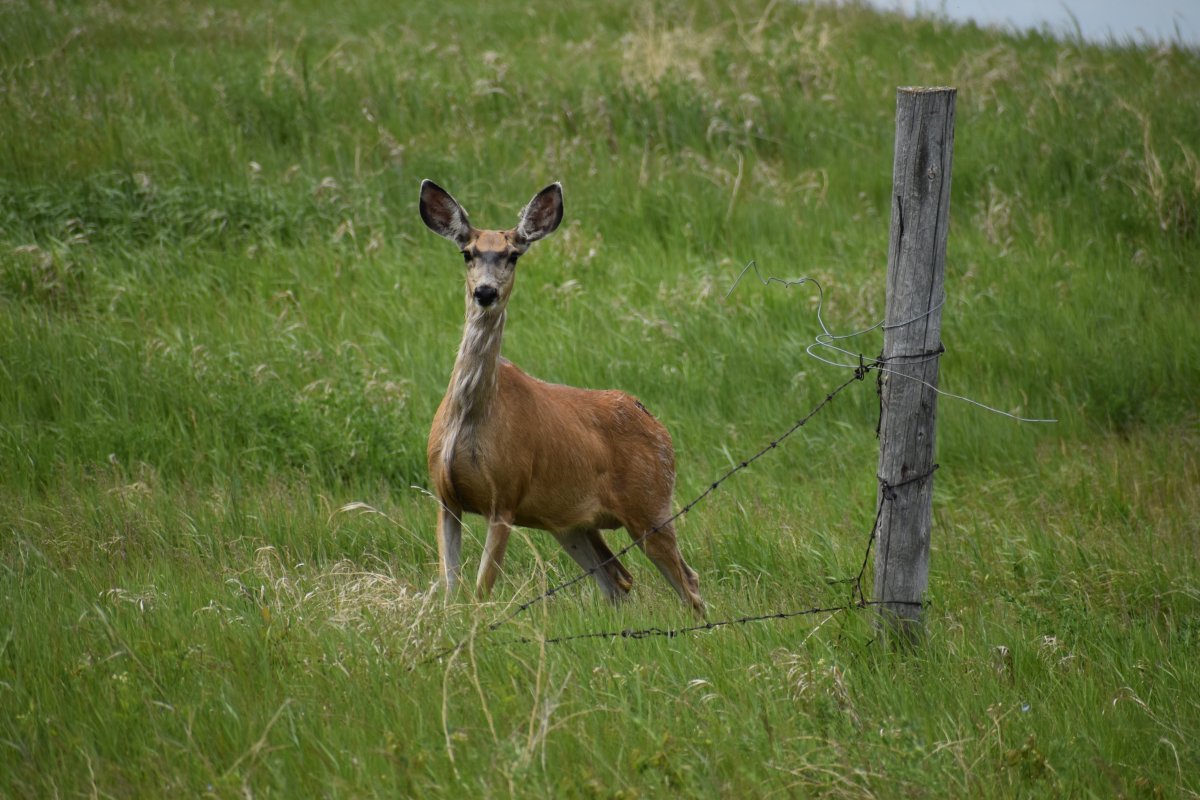With the 2020 hunting season starting up in two weeks, Saskatchewan hunters are asked to get their heads tested for chronic wasting disease (CWD).

Last hunting season saw an increase of 1,300 submissions to the provincial government’s CWD surveillance program from 2,000 submitted animals the previous year.
The program detected 528 positive cases, including 414 mule deer, 107 white-tailed deer, six elk and one moose. In 2018-19, 349 positive cases were detected in the province.
“For sure the number, it did increase in terms of positives, but we also tested more animals,” said Richard Espie, a wildlife health specialist with the Ministry of Environment.”
“If you look at the percentage of positives, that’s the deer that had CWD … they stayed about the same. The percentage is about 17 per cent in 2019 and about 17.5 per cent in 2018.
“So really, percentage-wise, the prevalence of the disease is about the same.”

Get breaking National news
CWD is a fatal, infectious disease of deer, elk, reindeer and moose that affects the central nervous system. There is no known cure.
Officials said CWD was initially detected in Saskatchewan at a captive elk farm in 1996 and in wild mule deer four years later. It has been detected in 55 of Saskatchewan’s 83 wildlife management zones.
The environment and agriculture ministries are working on some different management strategies to help limit transmission of the disease to new species and areas.
“One would be in terms of carcasses where we know there’s a high prevalence in certain areas. We would want to reduce the movement of those carcasses out of those areas,” Espie said.
“So we’re encouraging hunters to quarter their animals in the field and leave the more infectious material behind. And that would help potentially with moving infectious material around from different zones to different zones.”

Espie said there were around 107,000 resident hunting and trapping licences sold in 2019 and that was typical.
“I think it’s really important for hunters to get their deer heads tested and to see whether or not they have CWD. If the animal is positive, we encourage hunters not to consume those animals,” Espie said.
“We’re very happy with hunter support for the program… we actually need quite a few samples in order to be able to detect a positive animal in that particular zone. So that’s why we’re really targeting and pushing for good sampling in many of these sites.”
Animal heads can be submitted for testing at drop-off locations across the province.
A human case of CWD has never been identified, according to Espie.
Espie said the season for licensed hunters typically starts on Aug. 25 and runs until the end of December.


Comments